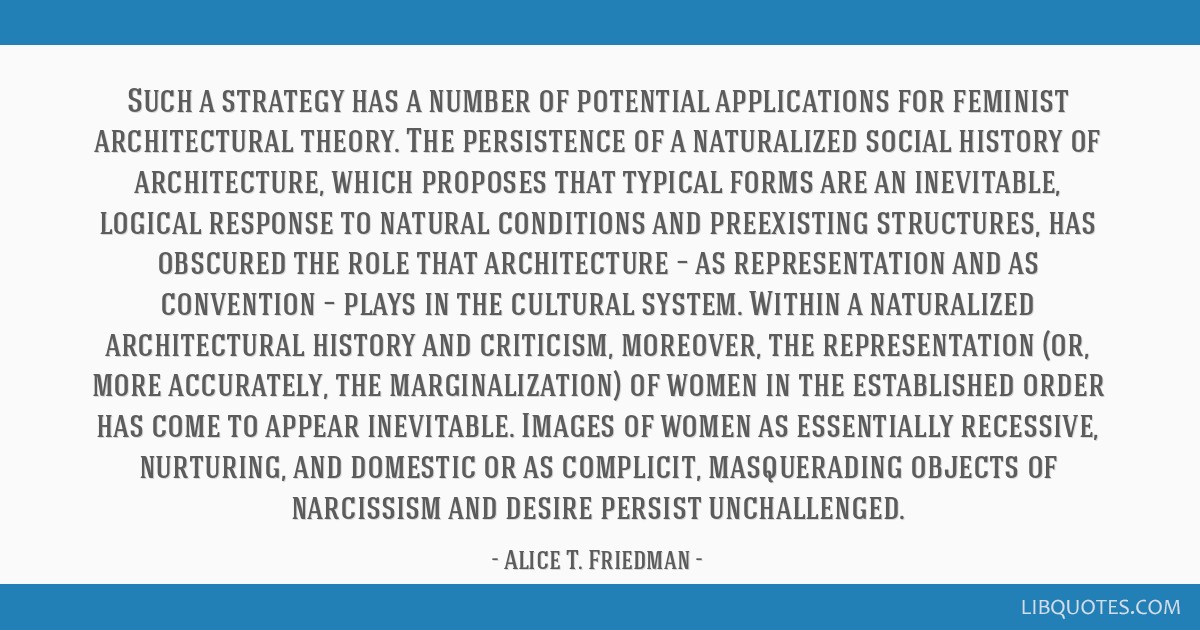Such a strategy has a number of potential applications for feminist architectural theory. The persistence of a naturalized social history of architecture, which proposes that typical forms are an inevitable, logical response to natural conditions and preexisting structures, has obscured the role that architecture – as representation and as convention – plays in the cultural system. Within a naturalized architectural history and criticism, moreover, the representation (or, more accurately, the marginalization) of women in the established order has come to appear inevitable. Images of women as essentially recessive, nurturing, and domestic or as complicit, masquerading objects of narcissism and desire persist unchallenged.
"Planning and Representation in the Early Modern Country House" (1992)























